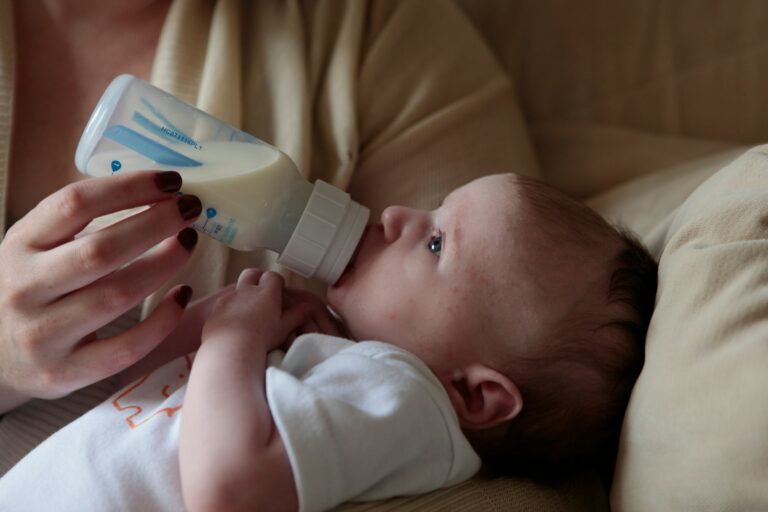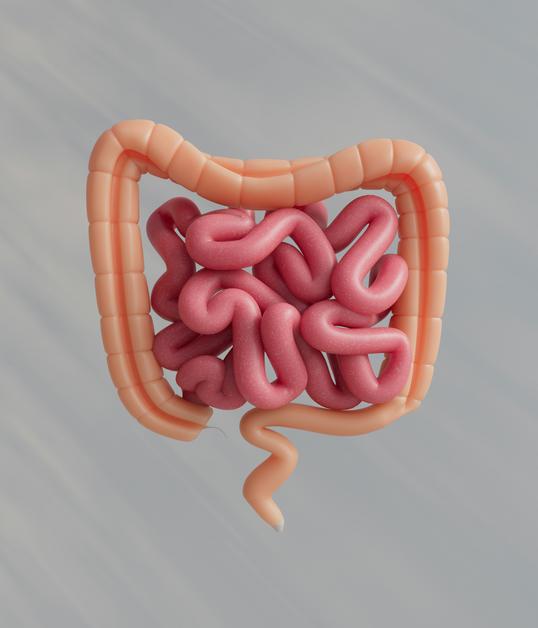The topic of KISS syndrome often sparks a whirlwind of emotions for parents—confusion, hope, and maybe even frustration as they search for answers about their baby’s posture or unexplained crying. Imagine having a newborn who always tilts their head to one side, resists tummy time, and struggles to latch during feeding. Uncertainty swirls: is this just a quirk of early development, or something more intricate unfolding beneath the surface? Parents frequently wonder about the causes, whether intervention is necessary, and what the best course of action might be. Let’s lay everything on the table: questions about movement asymmetry, worries over skull flattening, debates among health professionals, and practical tools to support your child’s growth—everything merits careful, nuanced attention. Throughout, curiosity and gentle vigilance are powerful allies.
What Is KISS Syndrome? An Exploration
KISS syndrome—shorthand for Kinematic Imbalance due to Suboccipital Strain—refers to what some practitioners describe as a dysfunction at the junction where the skull meets the top of the spine. This biomechanical imbalance is imagined to disrupt the delicate processes governing symmetry and neuromotor development in infants. Some believe that even slight disruption at this key joint can set off a domino effect: altered posture, irritability, or changes in feeding patterns might all be downstream signs. Intriguing—but here’s the complexity: KISS syndrome still sits outside the boundaries of official medical diagnoses. The term carries different weight across pediatricians, osteopaths, and chiropractors; some advocate for intervention, some call for caution, others deny its existence altogether.
Types of KISS Syndrome and Their Impact
Two main subtypes—sometimes referred to in literature—dominate discussion:
- Type I: The classic head tilt, dubbed the “favoring one side” phenomenon, where a gentle yet persistent inclination of the neck catches a parent’s eye.
- Type II: Marked by excessive extension, making feeding and head control more challenging for infants.
Both types converge on a common outcome: the risk that repeated asymmetric movement channels into broader skeletal and functional development.
Why Should Families Be Concerned? The Scope of Implications
The importance of prompt recognition goes beyond the superficial. Consider these potential consequences:
- Persistent asymmetric postures and compensatory head positions.
- Delays in motor milestones—lifting the head, rolling from back to tummy, crawling with confidence.
- Insidious feeding or sleep disturbances with no clear origin.
- Secondary complications like plagiocephaly (flattened spot on the head), or imbalances tracing down to the pelvis and spine.
In some cases, the pattern can spiral further, leading to difficulties with walking, learning, or even social development if not addressed early. Attuned parental attention—neither alarmist nor dismissive—serves as a gentle compass, guiding exploration of when to seek advice.
Deciphering the Medical Debate: Where Science and Controversy Collide
The landscape is far from straightforward. Some pediatricians and manual therapists strongly support early detection and tailored intervention for KISS syndrome. Other physicians highlight a significant overlap with ordinary infant behaviors, warning that overzealous diagnosis can obscure deeper, more serious issues. Why the disparity? The absence of standardized criteria, variable research quality, and a powerful placebo effect all muddy the waters. Ultimately, parents find themselves navigating a range of voices—some advocating hands-on therapy, others championing watchful waiting or conventional medical oversight.
What Causes KISS Syndrome? Unpacking the Origins
Birth-Related Factors: Trauma, Position, and Obstetric Interventions
Why do some infants display these subtle imbalances? Many point to the mechanics of birth. A particularly difficult delivery, involving forceps or vacuum extraction, can exert unusual force on the fragile cervical spine. Fast labors, prolonged pushing, emergency Cesarean sections, multiple pregnancies (with jostling for space in the womb), or complications like a nuchal cord (the umbilical cord wrapped around the neck) are all scenarios that parents might encounter in birth stories.
High birth weight and maternal stress also slot into the array of risk factors, though not all can be controlled. Importantly, knowledge is not about blame—understanding potential mechanical stresses simply opens the door to earlier observation.
Mechanical, Anatomical, and Speculative Genetic Predispositions
A block or restricted motion at the upper cervical spine can alter the natural dance of an infant’s muscles, shaping muscle tone and notably limiting neck mobility. Some parents ask: “Is there a hereditary element?” While there’s no concrete scientific evidence suggesting genetics play a predominant role, the question remains an active thread of inquiry. Each child’s story is unique—the sum of mechanics, environment, and their own physiology.
Recognizing Symptoms: How Does KISS Syndrome Manifest in Infants?
Classic Signs: Posture and Movement Asymmetries
A careful observer might note the following:
- An unmistakable C-shaped posture—think of a baby who constantly tilts their head or prefers being cradled only one way.
- Tendency for excessive neck extension, almost as if trying to shrink away from perceived discomfort. Feeding often becomes a battleground.
- Reluctance or difficulty turning the head equally in both directions.
- Torticollis (involuntary or persistent neck twisting, often mistaken for a muscular issue alone).
Secondary Clues: Skull or Face Asymmetry, Sleep, and Feeding Woes
Other red flags include:
- Flattened areas on the skull or altered face symmetry, known as plagiocephaly.
- Body posture that consistently favors one side.
- Inability to achieve age-appropriate head control—by three months, most babies can hold their head up briefly or turn towards stimuli.
The Bigger Picture: Emotional and Digestive Symptoms
Echoes of discomfort may emerge as:
- Persistent inconsolable crying—the kind that leaves everyone exhausted.
- Ongoing feeding or latching struggles: short, difficult feeds, reluctant interest in breastfeeding, frequent spit-ups.
- Fragmented sleep, possibly linked to aches or discomfort.
- Irritability during simple routines like dressing or being laid down for diaper changes.
Digestive troubles (colic, excessive gassiness), asymmetric limb use, or slower progress through rolling and crawling milestones often emerge with time, painting a multi-layered portrait.
Long-Term Evolution: Chronic Discomfort and Behavioral Changes
Unaddressed, the initial kinematic imbalance may eventually express itself through:
- Recurrent headaches, neck or back pain in older children.
- Subtle yet persistent balance or attention difficulties—sometimes mimicking ADHD.
- Behavioral shifts, such as irritability or learning hurdles.
- Recurring ear infections, or the early signs of spinal curvature (scoliosis).
KISS Syndrome Versus Other Conditions: Key Distinctions
Discerning between KISS syndrome, classic muscular torticollis, and neurological or structural problems matters deeply:
- While KISS implicates the subtle interplay of joints, true congenital torticollis centers on one tight muscle—usually the sternocleidomastoid—with different management implications.
- True neurological disorders, bone abnormalities, or (very rarely) infections require thorough, sometimes urgent, medical investigation.
Erring on the side of detailed evaluation proves safest—a child’s emerging profile deserves nuanced care.
Diagnosis: Tools for Careful Assessment
Clinical Examination
A specialized professional—be it pediatrician, physiotherapist, or osteopath—will start with a detailed birth and medical history. Systematic observation follows: symmetry of movement, preferred postures, interactive responses, all carefully cataloged.
Imaging and Diagnostic Aids
Routine X-rays or scans are typically reserved to exclude serious anatomical anomalies. No current imaging modality directly confirms KISS syndrome. Instead, the process orbits around exclusion and functional assessment, not quick diagnostic tests.
Excluding More Severe Conditions
Safety come first. Muscle disorders, congenital bony anomalies, and infections must be ruled out. There is no room for guesswork when it comes to a developing infant’s neurological status.
Management and Treatment Strategies
Gentle, Home-Based Approaches
For many infants, small daily tweaks make a profound impact:
- Regular “tummy time” to bolster neck muscle strength and encourage exploration.
- Alternating head orientation during every sleep—always on the back, but prompting variety to discourage flat spots.
- Incorporating both sides of the body into play, gently supporting movement towards the less-preferred side.
Parental vigilance—tracking subtle changes across days or weeks—provides invaluable feedback.
Manual Therapy: Promise or Pitfall?
Some families seek care from osteopaths or manual therapists with pediatric expertise. Sessions are typically gentle, attuned to a newborn’s anatomy. For some, a rapid improvement in flexibility or comfort is observed; for others, changes are more gradual or inconclusive. Here lies the undertaking—while parent anecdotes may be compelling, large-scale scientific studies remain inconsistent and sometimes contradictory.
Manual therapy should only proceed after thorough evaluation, in experienced hands, and under medical supervision. Side effects are usually mild—some extra fussiness, temporary reflux—but rare cases of serious harm have been reported in the literature, underscoring the importance of specialist oversight.
Physiotherapy and Multidisciplinary Support
Physiotherapists offer targeted stretches, strengthening routines, and hands-on correction for asymmetry. If speech or feeding remains an issue, involvement of occupational or speech therapists is often recommended. The best outcomes arise from integrated, monitored care plans, tailored for the individual child.
Prognosis, Relapse, and the Threat of Untreated KISS
When KISS Syndrome Persists
KISS that fails to resolve—sometimes evolving into KIDD syndrome—can cast long developmental shadows. Persistent postural imbalances, coordination difficulties, or even emotional and learning struggles may linger.
Thankfully, with appropriate, early, multidisciplinary attention, most infants move past these hurdles.
Ongoing Risks and the Need for Follow-Up
Relapses are not rare—falls, new traumas, or developmental leaps may reawaken old imbalances. Yearly check-ups, or earlier in the face of new concerns, allow for timely adaptation and intervention.
Debates, Ethics, and Parental Decision-Making
The Recognition Conundrum
Put simply: KISS syndrome inhabits a grey zone. No universal definition, varying recognition between manual therapists and traditional pediatricians, and risks associated with insufficiently tested interventions all stir heated discourse. While many families report benefit, others caution against misattribution—missing more serious causes in the rush toward a “quick fix.”
Guiding Principles for Parents
Leading pediatric bodies advocate for a tiered approach:
- Robust medical assessment, with exclusion of alternative explanations.
- If manual therapy is chosen, ensure it’s performed by practitioners who specialize in pediatric care and are in dialog with your core medical team.
- Parental consent and ongoing communication are non-negotiable—your insights into your child’s responses matter deeply.
Living the Day-to-Day: What Can Parents Do?
Everyday Observations and Subtle Support
Simple habits weave quietly into daily life:
- Promote active tummy time; a few minutes, several times a day, builds neck control and supports healthy spinal curves.
- Alternate side orientation with each nap, and vary the direction during bottle feeds.
- Engage both arms and legs during play—singing, talking, or gentle stretches all foster balance.
Keeping a notebook—tracking head position, feeding success, and sleep patterns—empowers parents to advocate confidently with their child’s care team.
Networks and Ongoing Communication
Connecting with other parents, whether through support groups or validated online platforms, can transform overwhelming uncertainty into shared learning.
Integrating Therapy and Routines
If professional therapy is advised, embed recommendations gradually into daily play or routines. These small rituals quickly become second nature—repetition is a powerful driver of developmental change.
Comparison Table: KISS Syndrome, KIDD Syndrome, and Congenital Torticollis
- KISS syndrome: Primarily considered a problem of the upper cervical joints, with widespread influence on posture, movement, and sometimes feeding.
- KIDD syndrome: Describes persistent or evolving symptoms—cognitive, behavioral, and emotional—that may follow untreated KISS.
- Congenital torticollis: Purely muscular; typified by tightness in one neck muscle, without the same joint involvement or global postural patterns.
Correct initial identification paves the way for targeted management—and the best potential outcome for every child.
Signs That Warrant Medical Advice
Don’t hesitate to consult a healthcare provider if:
- Persistent head tilt, odd head shape, or clear side preference occur.
- Your infant struggles to rotate their head fully, or lags behind in holding their head upright.
- Movement on one side seems limited or preference is obvious.
- Feeding battles, irritability, or ongoing unexplained crying persist.
- Motor milestones (rolling, crawling, walking) seem slow to appear.
Key Takeaways
- KISS syndrome remains a debated entity—referencing a suspected biomechanical imbalance in infancy that may underpin issues such as head tilt, movement asymmetry, or feeding struggles.
- Symptoms often resemble those of other, more serious conditions, reinforcing that a thorough pediatric evaluation is paramount before exploring manual therapy.
- No universal consensus exists; while some children show improvement from manual approaches, the scientific evidence is limited and possible risks must not be ignored.
- Early recognition, well-coordinated multidisciplinary care, and hands-on parental involvement form the backbone of improved developmental outcomes.
- Parents hold a uniquely powerful perspective—diligent, collaborative observation and a willingness to seek a second opinion can make all the difference.
Looking for support or practical resources? Consider downloading the Heloa app for tailored guidance and free health questionnaires—all designed to empower your parenting journey, every step of the way.
Questions Parents Ask
Can KISS syndrome affect sleep in infants?
Yes, some practitioners have observed that babies thought to experience KISS syndrome may also have sleep disturbances. Parents might notice that their infant has difficulty settling down, tends to wake frequently, or appears uncomfortable in certain sleeping positions. If you feel that sleep routines are especially challenging or your child seems unusually restless, it can be helpful to share your observations with a healthcare professional. They can work alongside you to identify possible causes and offer appropriate support—rest assured, you’re not alone in navigating these sleep concerns.
Is KISS syndrome recognized by the medical community?
KISS syndrome is a term discussed mainly in certain manual therapy and alternative medicine communities, but it is not officially recognized by most pediatric or medical organizations. The concept remains debated: while some therapists believe in its influence on infant posture and feeding, many doctors emphasize that scientific evidence is currently limited. It’s natural to feel confused by differing opinions, but you can always seek clarification from your healthcare provider. Open communication is essential for understanding the best path forward for your child’s unique situation.
Can chiropractic or manual therapy help with KISS syndrome?
Some parents are drawn to chiropractic or manual therapy as a way to support their child if KISS syndrome is suspected. While certain therapists report improvements in babies after gentle treatments, research on these approaches is still emerging and opinions differ widely among experts. If you are considering manual therapy, it’s important to consult with a pediatric specialist who understands both the potential benefits and risks. Your comfort and confidence in the care approach always matter—every family and child is unique.









